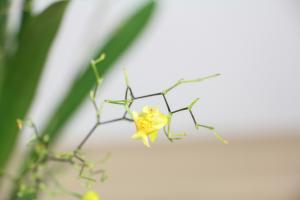How Do Plants Release Water into the Atmosphere?
Plants play a vital role in the Earth's ecosystem. Apart from being major producers of oxygen through photosynthesis, they also contribute to the planet's hydrological cycle, releasing water vapor into the atmosphere through a process known as transpiration. Transpiration is the movement of water, in a gaseous state, from the internal tissues of plants through the stomata on their leaves. It is a significant means by which plants regulate their temperature, maintain their water balance, and absorb nutrients from the soil. In this article, we will examine the various factors that influence transpiration and the mechanisms through which plants release water into the atmosphere.
The Components of Transpiration
Transpiration is a complex process that involves the interplay of several factors, such as temperature, humidity, soil moisture, wind, and light intensity. When these factors are optimal, plants can transpire between 10 to 90% of the water they absorb from the soil, depending on the plant species and environmental conditions.
The Role of Stomata in Transpiration
Stomata are tiny openings found on the surface of plant leaves that play a crucial role in the transpiration process. They regulate gas exchange between the internal tissues of a plant and the surrounding atmosphere. During transpiration, water molecules diffuse from the moist internal tissues of the plant to the drier atmosphere outside through these stomata. As the vapor escapes through the stomata, they also release oxygen and carbon dioxide into the atmosphere.
The Influence of Environmental Factors on Transpiration
The rate at which transpiration occurs is influenced by several environmental factors, such as temperature, wind, and humidity. For example, in hot and dry conditions, transpiration rates increase because the plant loses more water to the air to regulate its temperature. Similarly, on windy days, the movement of air around leaves can increase evaporation rates and, therefore, transpiration. Conversely, high humidity levels can reduce transpiration rates as the atmosphere is already saturated with water vapor.
The Importance of Transpiration
Transpiration plays a significant role in the Earth's hydrologic cycle. It contributes to the formation of clouds and precipitation, which ultimately supports the growth of plants and animals. It also impacts the global climate since water vapor is one of the most potent greenhouse gases, capable of retaining heat and affecting temperature patterns. Moreover, it is a significant means of nutrient uptake by plants, with water molecules transporting essential nutrients from the soil to the plant.
Conclusion
In summary, plants use transpiration to release water vapor into the atmosphere through their stomata, aiding temperature regulation, nutrient uptake, and supporting the hydrologic cycle. The rate of transpiration is dependent on environmental factors such as temperature, humidity, wind, and light intensity. Transpiration is an essential process that underpins the balance of life on our planet and calls for better understanding to promote its conservation.

 how many times do yo...
how many times do yo... how many planted tre...
how many planted tre... how many pine trees ...
how many pine trees ... how many pecan trees...
how many pecan trees... how many plants comp...
how many plants comp... how many plants can ...
how many plants can ... how many plants and ...
how many plants and ... how many pepper plan...
how many pepper plan...































